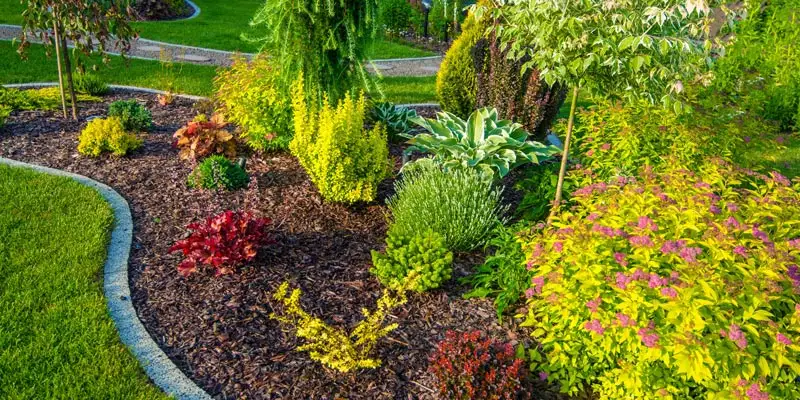The Definitive Guide to Landscape Design
The Definitive Guide to Landscape Design
Blog Article
Landscape Design Can Be Fun For Anyone
Table of ContentsLandscape Design - TruthsA Biased View of Landscape DesignNot known Factual Statements About Landscape Design Landscape Design - QuestionsExamine This Report on Landscape Design
A yard can normally be separated into 3 locations: public (the front backyard), personal (the back yard), and solution (commonly the side lawn). The location of activity areas depends mostly on the type of location, the size of room required, the type of task, and the desired distance to various other tasks and structures.The outdoors wall surface of the home frequently works as the very first wall or starting factor of an outdoor area. Incompatible usages should be divided, and relevant activities, such as food preparation and dining, need to be created to make the yard extra efficient and delightful. When using hardscape to create areas, utilize building and construction product similar to that utilized in the residence for continuity from your house right into the yard.
Linked areas. Debt: Gail Hansen, UF/IFAS Utilizing comparable hardscape functions and duplicating plants draws the eye around the garden. Essential factors along the means can be emphasized with growings or features that attract focus and encourage motion in a particular direction. Moving along the path takes an individual from one area to the next and enables the individual to have a range of experiences.
The 4-Minute Rule for Landscape Design

For mental comfort plants are utilized as physical or implied obstacles for personal privacy and safety. Physical barriers block both the sight and access to a room and consist of fences, wall surfaces and plant hedges.
Physical and implied barriers. Credit: Gail Hansen, UF/IFAS For these factors, the types of plants to be made use of (such as trees, shrubs, or groundcovers) ought to be picked in the onset of preparation (Landscape Design). Plant kinds are selected for their useful abilities so that their future objective and needed room can be thought about at the very same time

The Ultimate Guide To Landscape Design
Each plant mass is in front of, behind, or alongside, an additional mass. Figure 11. Straight plant layers. Credit Score: Gail Hansen, UF/IFAS Figure 12. Vertical plant layers. Landscape Design. Credit: Gail Hansen, UF/IFAS Duplicating plants within a mass and duplicating masses with comparable plants ties the garden with each other. The individual plant qualities need to be considered to efficiently layer and mass plants.
All plant make-ups start with the major framework plants, the huge, mostly evergreen background plants-such as the trees and big shrubs. These plants separate or enframe rooms, manage the dimension of the room, and provide the starting point for choosing the suitable qualities of the 2nd layer, midground plants, for massing and infill.
Vital factors in the garden must be highlighted by the usage of unique plants, distinctive frameworks, or yard accessories. Noting limits or entries to areas can be done with entrances, arbors, and actions, or with making use of one-of-a-kind and vivid plants. The kind and/or design theme of the yard will frequently aid figure out the important points and his response how they should be highlighted.
Various other vital places in the backyard are centerpieces, which is used to aesthetically arrange a landscaped location. The kind of prime focus frequently depends on the viewing point of view. Different point of views or point of views can reveal different structures in the landscape that might require a variety of focal factors. Contrasting texture, form, size and shade will record and hold the eye.
The Landscape Design PDFs

Plant types. Debt: Gail Hansen, UF/IFAS After kind, structure is the next dominant attribute This Site of a plant; rugged, medium and fine textures can be used for comparison and emphasis in the landscape.
The pleasant scent of plants, the audio of wind in the trees, the noise and texture of water, and the shades and structures of sculptures, pots and garden furnishings all contribute to the experience of the garden. One information that is usually forgotten is the impact of light on the visual appeals of the plants.

The Ultimate Guide To Landscape Design
It is very important to know the ultimate mature dimension of plants so they can be positioned in the right location and spaced effectively when they are installed. Offering plants room to expand is an obstacle since the usual mature dimension is normally based upon optimum growing conditions and the ecological problems of click here to read a website may cause a plant to grow larger or remain smaller.
Report this page